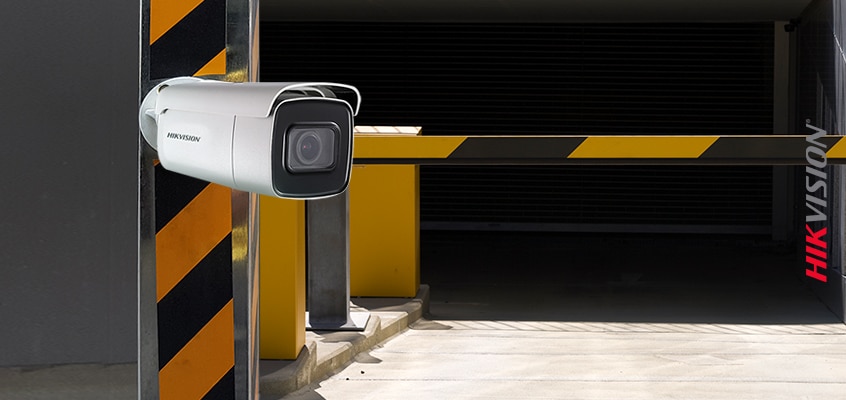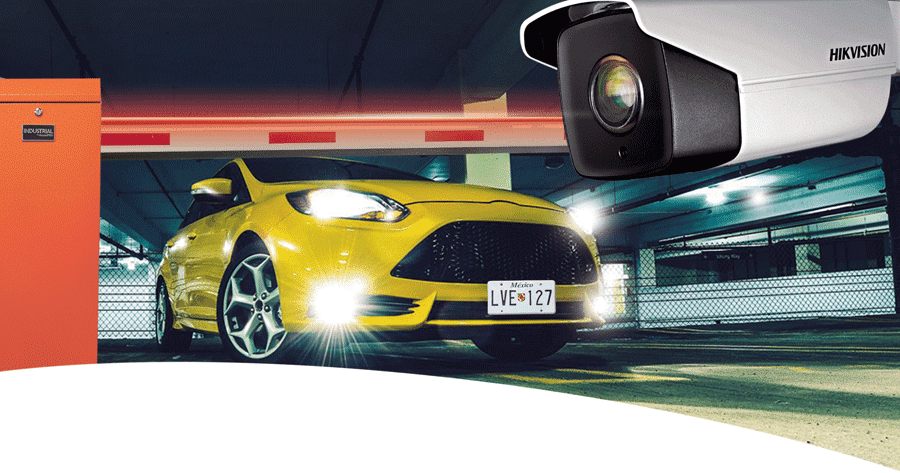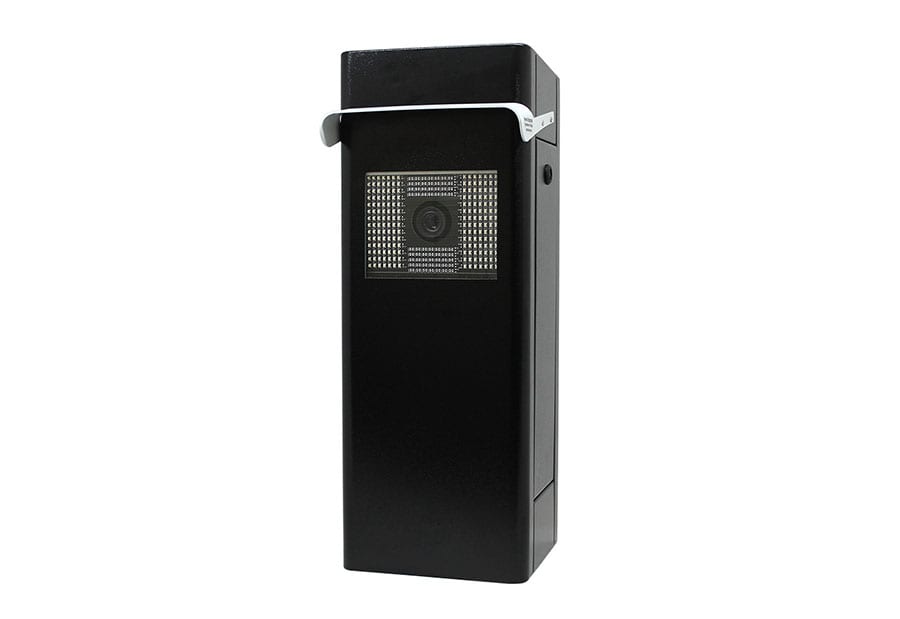- Home
- About Us
- Products
- Electronic Article Surveillance System EAS / Retail Anti theft Systems
- Display Stands
- Restaurant Pager
- People Counting Systems
- Queue Management Systems
- Access Control System
- Time Attendance Systems
- Audio & Visual System Solutions
- Display Solutions
- CCTV Cameras in Qatar: Enhancing Security Solutions
- Time Lapse Construction Camera
- Flap Barrier, Speed Gates, Turnstiles Access Control
- Gate Barriers System & Bollards in Qatar
- Parking Management & Gate Automation
- Library Management Systems
- IT & Telecom
- Lockers & Key Management Systems
- Intrusion Alarm System
- Perimeter Security
- Vehicle Tracking
- Time Recorders & Time Stamps
- Emergency Exit Door Alarms
- Clients
- Contact Us
- Support
Contents
LPR Camera: What You Need to Know
License plate recognition (LPR) is a technology that uses cameras and software to automatically capture and identify the license plates of vehicles. LPR cameras are widely used for various purposes, such as access control, traffic management, toll collection, parking enforcement, security, and law enforcement. In this blog post, we will explain what LPR cameras are, how they work, what are the different models available, and how Axle Systems can help you with your LPR camera needs in Qatar.
What are LPR Cameras?
LPR cameras are specialized video surveillance cameras that are designed to capture the numbers and letters of license plates on still or moving vehicles. LPR cameras have high-resolution sensors, infrared illumination, and optical zoom to ensure clear and accurate images of license plates in various lighting and weather conditions. LPR cameras also have built-in or external software that analyzes the images and converts them into machine-readable text using optical character recognition (OCR) algorithms. The text can then be compared with a database of license plates or used for other applications.
How do LPR Cameras Work?
LPR cameras work by following these steps:
- Capture: The camera captures an image of the vehicle and its license plate as it passes by or stops in front of the camera. The camera can be mounted on a fixed location, such as a pole, a wall, or a gate, or on a mobile platform, such as a vehicle or a drone.
- Process: The camera processes the image using image enhancement techniques, such as cropping, rotating, binarizing, and filtering, to isolate the license plate area and improve its quality and readability.
- Recognize: The camera recognizes the characters on the license plate using OCR algorithms that can detect different fonts, sizes, colors, and formats of license plates. The camera can also recognize other features of the vehicle, such as make, model, color, and type.
- Output: The camera outputs the recognized text and other information to a local or remote server, where it can be stored, searched, displayed, or integrated with other systems.
What are the Different Models of LPR Cameras?
There are different models of LPR cameras available in the market, depending on the features and specifications required for different applications. Some of the common factors that differentiate LPR cameras are:
- Resolution: The resolution of the camera determines the quality and detail of the captured images. Higher resolution cameras can capture more pixels per inch (PPI), which means more clarity and accuracy of license plate recognition. However, higher resolution cameras also require more bandwidth and storage space.
- Frame Rate: The frame rate of the camera determines how many frames per second (FPS) the camera can capture. Higher frame rate cameras can capture more images in a given time period, which means more chances of capturing a clear image of a fast-moving vehicle. However, higher frame rate cameras also require more processing power and memory.
- Speed Range: The speed range of the camera determines how fast or slow the vehicles can be moving for the camera to capture their license plates. Different speed ranges are suitable for different scenarios, such as parking lots, highways, or toll booths. For example, a low-speed range camera can capture license plates at speeds up to 30 km/h (18 mph), while a high-speed range camera can capture license plates at speeds up to 250 km/h (155 mph).
- Angle Range: The angle range of the camera determines how wide or narrow the field of view (FOV) of the camera is. A wider angle range means that the camera can capture license plates from different angles and distances, which increases the coverage area and flexibility of installation. However, a wider angle range also means that the license plate image may be distorted or blurred due to perspective effects.
- Illumination: The illumination of the camera determines how well the camera can capture license plates in low-light or dark conditions. Most LPR cameras have built-in infrared (IR) LEDs that emit invisible light that reflects off the license plates and makes them visible to the camera. Some LPR cameras also have white light LEDs that emit visible light that illuminates the license plate area and enhances its contrast and color.
Some examples of LPR camera models are:
- Amcrest 4MP LPR Security Camera IP4M-1062EW-AI: This is a high-resolution IP camera that has full color night vision with an integrated spotlight. It can recognize vehicle type, color, driver, and passenger features from a distance of 8 m to 30 m (26 ft to 98 ft). It can track objects as fast as 60 km/h (37 mph) with pinpoint accuracy.
- Hikvision 2MP LPR Security Camera DS-2CD7A26G0/P-IZHS8: This is a high-performance IP camera that has face detection and low-light technology. It can recognize license plates from a distance of 3 m to 40 m (10 ft to 131 ft). It can track objects as fast as 120 km/h (75 mph) with high accuracy.
- Dahua 2MP LPR Security Camera ITC237-PW6M-IRLZF1050-B: This is a cost-effective IP camera that has a varifocal lens and IR illumination. It can recognize license plates from a distance of 3 m to 25 m (10 ft to 82 ft). It can track objects as fast as 80 km/h (50 mph) with reliable accuracy.
- Hanwha 2MP Security Camera XNO-6120R/LPR: This is a high-end IP camera that has a global shutter and IR illumination. It can recognize license plates from a distance of 5 m to 40 m (16 ft to 131 ft). It can track objects as fast as 200 km/h (124 mph) with excellent accuracy.
- Tattile 4MP LPR Camera Vega Smart HD: This is a smart IP camera that has an embedded processor and software. It can recognize license plates from a distance of 3 m to 35 m (10 ft to 115 ft). It can track objects as fast as 250 km/h (155 mph) with outstanding accuracy.
How can Axle Systems Help You with Your LPR Camera Needs in Qatar?
Axle Systems is a leading provider of security and automation solutions in Qatar. We offer a wide range of LPR cameras and systems from reputed brands, such as Amcrest, Hikvision, Dahua, Hanwha, and Tattile. We can help you choose the best LPR camera model for your specific application and budget. We can also install, configure, integrate, and maintain your LPR camera system with our professional and experienced team. We can provide you with the following benefits:
- High-quality products and services at competitive prices
- Customized solutions tailored to your requirements and preferences
- Expert advice and guidance from our qualified and certified engineers
- Fast and efficient delivery and installation across Qatar
- Comprehensive after-sales support and warranty
If you are looking for a reliable and reputable distributor of LPR cameras in Qatar, contact Axle Systems today. We will be happy to assist you with your LPR camera needs and provide you with the best solution possible.
FAQs about LPR Cameras
Here are some common questions and answers about LPR cameras that you may find helpful.
Q: What are the advantages of LPR cameras?
A: LPR cameras have many advantages, such as:
- Enhancing security and safety by identifying unauthorized or suspicious vehicles
- Improving efficiency and convenience by automating vehicle access control and payment
- Reducing costs and errors by eliminating manual data entry and verification
- Providing valuable data and insights for traffic analysis and management
Q: What are the challenges of LPR cameras?
A: LPR cameras also have some challenges, such as:
- Dealing with different license plate formats, standards, and languages
- Handling environmental factors, such as glare, shadows, dirt, snow, rain, etc.
- Respecting privacy and legal regulations regarding data collection and usage
- Preventing cyberattacks and data breaches on the network and server
Q: How accurate are LPR cameras?
A: The accuracy of LPR cameras depends on many factors, such as the quality of the camera, the software, the image, the license plate, and the database. Generally speaking, modern LPR cameras can achieve an accuracy rate of over 95%, which means they can correctly recognize more than 95 out of 100 license plates.
Q: How much do LPR cameras cost?
A: The cost of LPR cameras varies depending on the model, the features, the specifications, and the supplier. Typically, LPR cameras can range from $500 to $5000 per unit. However, the total cost of an LPR camera system also includes other components, such as servers, software licenses, cables, mounts, etc., as well as installation and maintenance fees.
Q: How long do LPR cameras store data?
A: The storage duration of LPR camera data depends on the storage capacity of the server or cloud service, as well as the retention policy of the user or organization. Some users or organizations may store data for a few days or weeks, while others may store data for months or years. However, there may be legal or ethical limits on how long data can be stored without violating privacy or consent rights.




